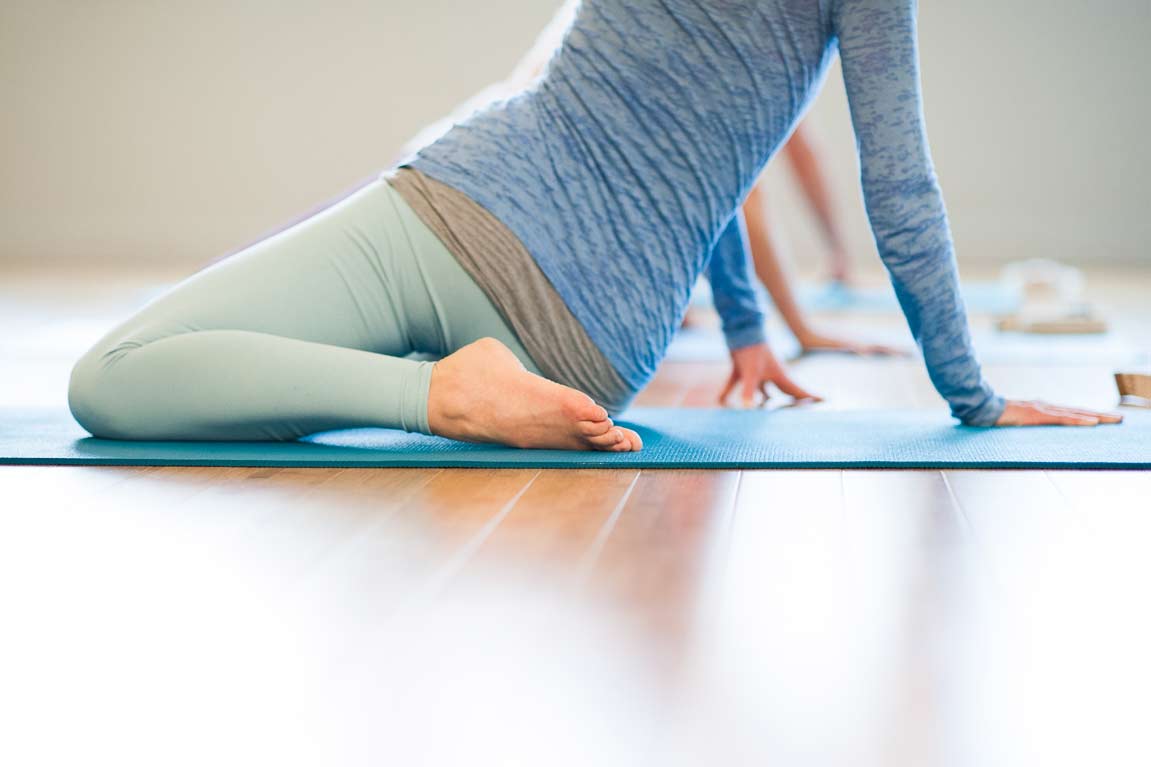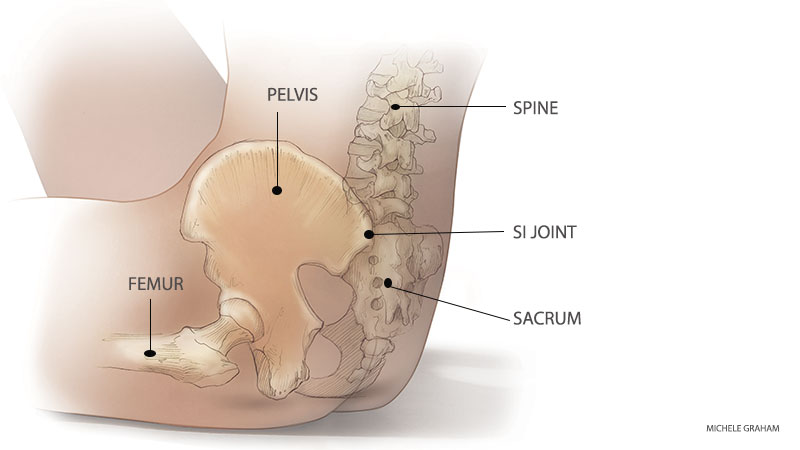
08 Sep 2015 Twists and the Sacroiliac Joint
Lately, I’ve had several conversations with students about how to twist safely without tweaking their sacroiliac joints. Recently, a student brought this article by Judith Lasater to my attention. In it, Lasater discusses how twists can be challenging poses for students with sacroiliac joint issues and how to twist so the SI joint stays happy. I encourage you to read it to get her perspective on dealing with twists and a tricky SI joint.
I have a tremendous amount of respect for Judith Lasater. A Ph.D. in Physical Therapy, she has been teaching yoga since 1971 and is a former Senior Iyengar instructor. Her books, Relax and Renew: Restful Yoga for Stressful Times and Living Your Yoga: Finding the Spiritual in Everyday Life, sit, in well-read condition, on my bookshelves. I trust her and respect her experience. This article gives me, and my fellow teachers, a chance to think about how twists can adversely affect our students with S-I joint issues and how to understand the anatomy and work with it to keep twists feeling good.
The central tenet of Lasater’s position is that while every pose needs an anchor, it’s a mistake to think the anchor in seated twists is the pelvis, as many students are taught. Lasater says, if you anchor the pelvis in a seated twist, like Marichyasana III,
the sacrum is being dragged into the twist with the rest of the spine, while the pelvis is being held back and thus moves in the opposite direction. Add to this effect the extra torque and force that the arm exerts on the soft tissue around the SI joint when it levers against the outside of the leg to create the twist, and the potential for overstretching the sacral ligaments increases manyfold.
Instead, the anchor (in Mari III) is the thigh and foot of the bent knee on the ground, and if the pelvis and sacrum shift and start the twist,
followed by the spine twisting second, the SI joint will be much happier. The key to protecting the SI joint, be it in standing poses like Trikonasana and Parivrtta Trikonasana, forward bends like Marichyasana I, or seated twists like Marichyasana III, is this: Always move the pelvis and sacrum together.
Articles like this one give yoga instructors everywhere an opportunity to study the anatomy in question, practice the poses as instructed, and explore the levels of truth being presented. They stir up questions and discussion about ways to approach poses. With the prevalence of SI issues, instructors can be of greater benefit to their students when they deepen their knowledge and understanding of this area and how poses can affect it.
Here’s my question for Lasater and for any instructor reading this: if the pelvis is anchored in Maricyasana III, is it possible to start the twist from the lumbar rather than the pelvis/sacrum and won’t this also be safe for the SI joint? Can you keep the pelvis anchored and start the twist at the lumbar spine without torquing the SI joint or will this always tweak the SI joint?
Let’s talk a bit about how the SI joint moves (and shouldn’t move) to further flesh out my question.
The sacrum and the ilium are joined together at the sacroiliac joint. The articulating surfaces of each have irregular ridges and depressions, so the SI joint is like a tongue and groove joint. As such, the movement of this joint (small as it may be) must be particular in order to avoid shearing the SI joint.
The only safe action for the SI joint is either the ASIS (frontal hip bones) moving towards each other or away from each other. Imagine the sacrum as the spine of an open book and the ilium like the front and back covers. A book should only open and close to keep the spine of the book intact. One cover can’t shift up or down as the other stays still or shifts oppositely without damaging the spine. Similarily, you can’t shift one cover forward and the other back without damaging the spine. The SI joint should move the same way. The ilium can move towards each other or away but the left ilium shouldn’t move higher than the right (or vice versa), and one side of the SI joint shouldn’t shift back while the other stays still or moves forward.
I agree with Lasater that the pelvis and sacrum stay happy and stable when they move together so shearing of the SI joint doesn’t occur, but is it possible to keep the pelvis rooted and start the twist at the lumbar spine? And if you shift the pelvis and the sacrum to begin the twist “at the base,” as Lasater calls it (so does this mean twists start at the sitting bones?), could this run the risk of shearing the SI joint, another method of making the SI joint unhappy?
What say you, fellow yogis, anatomy geeks, and those who suffer SI joint problems? Join in the discussion in the comments.




Sorry, the comment form is closed at this time.